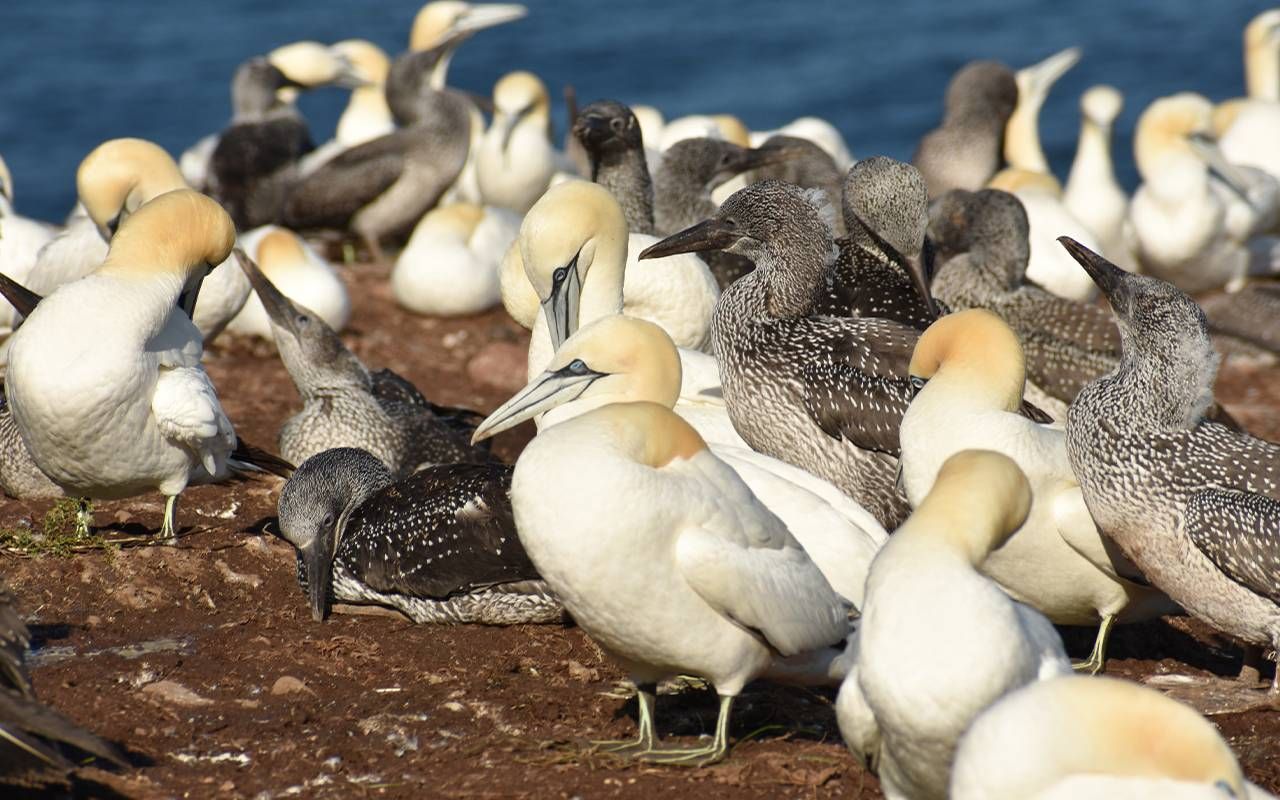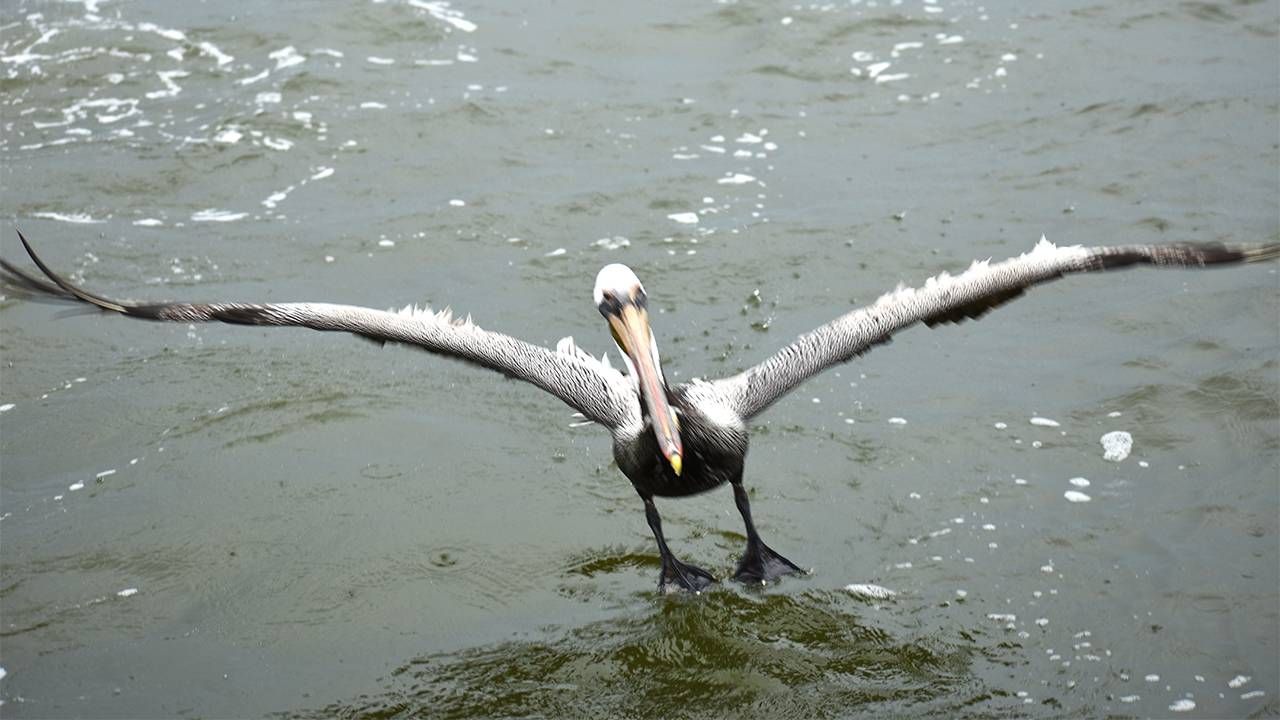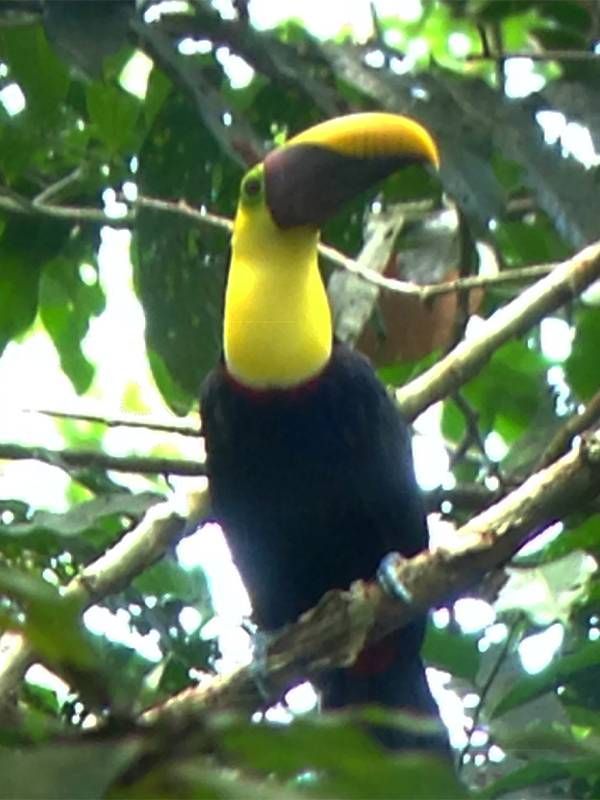Flock to These 4 Feather-Friendly Destinations
If you are a birder, you won't want to miss these North American hot spots
Jeff Bentoff is just one person among two million Americans who started birding during the pandemic. It began with Facebook. The Milwaukee, Wisconsin, resident began to notice photographs popping up of colorful birds taken by friends and neighbors.

"I realized that there were all of these amazing, colorful birds all around me ... I didn't know they were here, so it really piqued my interest. It made me wonder what am I missing," Bentoff said.
"I want to know what's happening around me in the natural environment. To me, that's really exciting."
Bentoff bought himself a pair of binoculars and decided to join a neighbor on a jaunt to their neighborhood park. A black-throated gray warbler, unusual in the area, had been spotted, and news had spread through the local birders' network. Bentoff knew they were hot on the warbler's trail when they came upon a gathering of people, including several photographers poised with their signature long lenses.
Since then, Bentoff has invested in a camera specifically for birding, downloaded several helpful apps (like the Merlin app that will identify a bird based on a bird call), and connected with several walking groups for birders.
He compares birding to learning a language or a musical instrument. His goal is to gain more knowledge through practice.
"I want to know what's happening around me in the natural environment. To me, that's really exciting," Bentoff said.
With travel back in full swing, birders like Bentoff have taken to the skies. If considering a birding trip of your own — or visiting a special spot where you can enjoy a variety of activities including birding — the following four destinations are certain to spark your interest.
The Gaspé Peninsula, Quebec
Those who love the energy of a crowd — of birds, that is — will love the Gaspé Peninsula's Bonaventure Island. One of the largest colonies of northern gannets in the world resides on this uninhabited isle during the summer months.
Begin your adventure at Percé wharf where you can pick up a ferry to the island. First, however, the captain will encircle another of the area's draws, Percé Rock. Measuring nearly five football fields in length, the rock is an iconic monolith. It rises out of the Gulf of St. Lawrence, just offshore from the charming village of Percé. The ferry ride will give you a chance to see this natural work of art up close and personal.
Next, it is on to nearby Bonaventure Island and a zoomed-out look at the northern gannets. Appearing cigar-shaped in flight, the birds have a long pointy beak on one end and jagged tail on the other. Their pearly white plumage starkly contrasts with the crisp blue of the Northern Atlantic sky and sea as well as the clay-colored cliffs where they nest.
Their cream-colored heads and blue eyes come into focus, while at the same time, their multitude blends into an alabaster blur.
The ferry ride is a great opportunity to see the birds in action. Starting as high as 100 feet, they circle the waters looking for prey and then divebomb the water at a high rate of speed.
After arriving at the dock, take the 3.5-mile colony trail for a look at the northern gannet outpost. You will know that you are close when you hear a cacophony of cawing birds. The wooded trail empties out into a wide-open area on the edge of the island, and it is here that tens of thousands of northern gannets nest.
They are as captivating to watch on land as they are in the air. Their cream-colored heads and blue eyes come into focus, while at the same time, their multitude blends into an alabaster blur. And as entertaining as their fishing technique, the birds engage in what looks like a sort of sword dance, mated pairs facing each other and scraping the edges of their long bills back and forth.
Percé is located just south of the Gaspé Peninsula's tip, an eight-hour drive from Quebec City. If that seems like a long trek, know that the scenery on the way up the peninsula is as lovely as the birds.
Gulf Shores, Alabama
Alabama's Gulf Coast is the place to set your eyes on a myriad of species rather than a single colony. (Although you do stand a good chance of seeing northern gannets in Gulf Shores during the northern hemisphere's winter months.) To help pinpoint areas ripe for birders, The Alabama Coastal Birding Trail offers six loops of over 200 miles.
In fact, over 170 species of birds winter along the 53 miles of Alabama coastline, according to the Alabama Ornithological Society. Many others pass through the region as they travel the Mississippi Flyway.
In the spring, the beaches are a good spot to view permanent residents who nest on its sandy shores. This includes snowy plovers, least terns, black skimmers, American oystercatchers and Wilson's plovers.
You may also want to try your luck watching an aviary phenomenon in action on Dauphin Island, aptly named "America's Birdiest City" for three consecutive years by the National Audubon Society. The barrier island is a short ferry ride from the western tip of the Gulf Shores peninsula.

Called a "fallout," birds, like indigo bunting, fall from the sky following a particularly arduous journey from Mexico across the gulf. Adverse weather conditions require great effort from the birds to the point that they fall out of the sky from pure exhaustion.
However, it is the shorebirds that most enthrall Alabama's visitors. To really get a good vantage point of Alabama's finest in their natural habitats, get off the well-trodden birders' path and kayak the waterways instead.
Wild Native Tours offers half-day kayak trips through Oyster Bay, the Intracoastal Waterway and Bon Secour Bay and River. Not only will you see brown pelicans, blue herons, great egrets, cormorants, ospreys and belted kingfishers, you will learn about their habits and other fun facts from owner and guide Kristian Aboud. In addition to the birds, you also stand a good chance of kayaking alongside a pod of dolphins.
Pinnacles National Park in Central California
Pinnacles National Park sits quietly in the shadows of Sequoia and Kings Canyon National Parks (145 miles west) and Yosemite National Park (130 miles northwest). All the better for the California Condor that frequents its canyons and the tourists who don't need to fight the crowds when coming to see them.
California condors are the largest land birds in North America with a wingspan of more than nine feet and a weight typically reaching 20 pounds. Their longevity is hefty, too; California condors, an endangered species, live over 60 years. Seeing them in their natural environment is a treat, and Pinnacles offers one of your best bets for doing so.
California condors are the largest land birds in North America with a wingspan of more than nine feet and a weight typically reaching 20 pounds.
If you don't mind a bit of an adventure, getting to Pinnacles is fun, too. The park has two entrances, neither road connected to the other. To reach the western entrance requires a seven-mile drive down a remote, winding road that narrows to one lane. To reach the Visitors' Center or campground, enter from the east.
Each side of the park offers a hiking trail that will take you past the spires that Pinnacles is named for and to a group of talus caves, one of its finest features (aside from the California condor). Hiking through the caves is a bit like hiking through slot canyons: dark, extremely narrow with some mild climbing required. The caves have formed over time as boulders have fallen from cliffs forming a giant pile of rubble.
If you take the western route out of the park following a day of hiking and searching for California condors, consider a stop at Chalone Wineries for a rest and a glass of their signature Chardonnay while sitting amidst the stark beauty of the Gabilan Mountains. The drive is mere minutes from the park's boundary.
Costa Rica's Oca Peninsula

In the southwestern corner of Costa Rica lies the remote Osa Peninsula, once an island in the Pacific. A mere 700 square miles, it houses 2.5% of the world's biodiversity including over 460 species of birds. An array of 16 species of hummingbirds are among them.
However, the scarlet macaw is, by far, the peninsula's biggest showstopper. In fact, the Osa Peninsula is the site of Central America's largest population of this colorful bird. Their loud, distinctive crooning often alerts visitors to their presence long before their bright ruby red feathers come into view. In addition to their namesake color, they also boast canary yellow and bright blue on their wings.
The bird's size gives them away as well. The largest parrots in the world, the scarlet macaw can measure up to 33 inches from beak to tail. In addition to scarlet macaws, guests stand a good chance of catching sight of cotingas, pelicans, cormorants, boobies, antbirds, Amazon parrots and toucans.
A great place for a guided hike is Corcovado National Park. Keeping an ear tipped to the treetops, the guides quickly throw down their tripods equipped with high-resolution magnifying lenses when they spot a bird of interest.
In addition to the birds, you will likely see two and three-toed sloths and spider, capuchin, titi and howler monkeys. Be sure to adjust your gaze to ground level from time to time. You stand a good chance of seeing tapirs, wild peccaries, coati and more.


